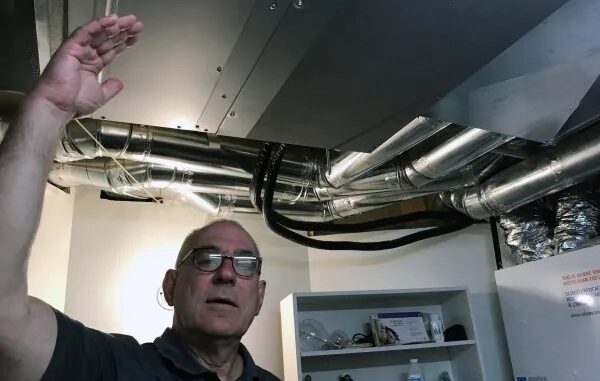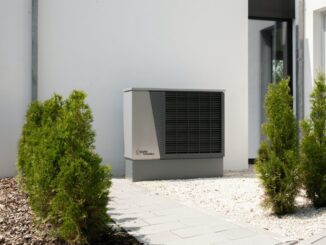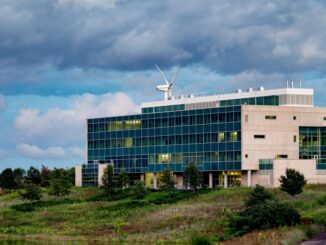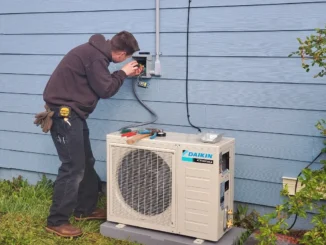
Correction: Buildings account for about 40% of Minnesota’s total energy consumption. An earlier version of this story misattributed the figure to heating only.
Michael Overend and Lucy Grina love to show visitors around their home, a modest four-bedroom rambler, built in 1965 on a gravel road just north of Duluth, Minnesota.
The couple’s pride, however, did not always extend to one feature: the utility bills.
“We were embarrassed about how much heat this old house was leaking,” Overend said, “and we were cold a lot.”
Today, the couple is among a small but growing number of northern Minnesota homeowners finding comfort and savings by pairing energy-saving weatherization with an all-electric heating and cooling system known as a heat pump.
Get connected
Every morning, thousands of energy professionals turn to our newsletters for the day’s most important news. Sign up for free to get the latest delivered straight to your inbox.
Heat pumps are highly efficient, two-in-one appliances that can both heat and cool a home, even in a notoriously cold climate such as northern Minnesota. The technology will likely be a key component of the state’s climate strategy, as buildings are a significant contributor to the state’s greenhouse gas emissions.
While still a niche, utilities, contractors, and advocates expect the technology to take off as more incentives become available and more people become familiar with what it can do.
For Overend and Grina, it started with consulting an expert on building super-efficient homes. They had raised two children in their home, but as they retired they had to decide whether to keep the house and improve its livability or buy elsewhere.
The first step was to get an energy audit, and then contractors plugged holes and added insulation and efficient windows. Eventually, the home was so tight they had to install an air exchanger to keep the air fresh and healthy. That’s standard practice in energy-efficient home construction these days.
Next came the heat pump. The systems have been around for decades, but their performance and efficiency improved by leaps and bounds in recent years. Those improvements, along with growing awareness about climate change and the hazards of burning fossil fuels indoors, have helped raise the appliance’s profile in recent years.
Heat pumps are more efficient than furnaces because they don’t make heat; they move it from one place to another, the same as refrigerators do. The outdoor unit looks essentially like a standard air conditioner. It has a coil filled with refrigerant and a fan that blows air across the coil. The indoor unit also has a coil and a fan. As the refrigerant moves through the system, a compressor pressurizes it and then allows it to expand, causing it to shift between a gas and a liquid. This enables it to absorb heat outdoors and release it inside.
In the summer, the system can be reversed, removing heat from inside more efficiently than a standard air conditioner can.
The most advanced heat pumps can extract heat from the air even on very cold days. This is because of newer, variable-speed, inverter-driven compressors. They are more efficient because they run continuously at varying speeds to match the heating or cooling load in the house, rather than stopping and starting as most furnaces do.
Overend said his system keeps the house toasty down to 20 degrees below zero Fahrenheit. There are backup electric radiators, and the system can switch automatically to the backups, but Overend said they hardly ever come on.
Overend said the new system — including removing the old furnace, installing the two heat pumps and some new ductwork, and adding the air exchanger and a new water heater — cost the couple about $25,000, and it has lowered the home’s energy use by 40%.
Savings depend on the type of system the heat pump is replacing. Homeowners who rely on propane can save as much as 30% on home heating costs; those using electric resistance (baseboard) heat can save as much as 50%, according to the Air Source Heat Pump Collaborative, a project of the Minneapolis-based nonprofit Center for Energy and Environment and major utilities in the state.
The collaborative’s manager, Rabi Vandergon, said rebate applications for heat pumps spiked in 2020 during the COVID-19 pandemic, as more people focused on home improvement. Supply chain problems slowed sales some, but numbers are up again this year, he said.
“We expect to see another jump,” Vandergon said. “People want to help with climate change, especially if it doesn’t hurt their pockets.”
Vandergon said the new systems are most valuable for rural residents currently served by propane or electric baseboard heating. The financial case is less clear to natural gas customers, but he’s excited about the rebate and tax credit programs soon to be available through the federal Inflation Reduction Act and Minnesota’s landmark 2023 energy legislation.
Homeowners can save more when they combine heat pumps with dual-fuel programs offered by some utilities. Minnesota Power, for example, offers customers a lower rate in exchange for the ability to stop the heat pump during times of high energy demand, forcing the home to switch to backup heat from another source.
Limited research and the increasing confidence of experienced installers are persuading homeowners that heat pumps really can work in cold climates.
HVAC contractor Chad Thompson has been installing heat pumps since he started Twin Ports Custom Climate just across the border in Superior, Wisconsin, 20 years ago. He’s witnessed monumental improvements in technologies and equally encouraging changes in consumer attitudes.
“The capabilities of the new units have gotten probably 10 times better over the last 10 to 15 years,” Thompson said.
Sales growth has occurred mainly by word of mouth. Things took off during the pandemic, Thompson said, while the region’s increasingly hot and humid summers have probably prompted interest, too. Others are motivated by climate change and the desire to stop burning fossil fuels.
The number of applications for utility company rebates for heat pumps in Minnesota more than doubled over four years, from just over 2,000 in 2019 to 4,600 in 2022, according to the Air Source Heat Pump Collaborative.And sales of heat pumps in the U.S. surpassed sales of natural gas furnaces in 2021, according to the International Energy Agency.
In the northeastern part of the state, Minnesota Power is bullish on heat pumps, offering rebates for the last several years. The company holds annual training events for contractors to learn from experts and manufacturers, and it requires customers to use preferred contractors to get a rebate.
“We want to encourage customers installing electric heat to do something that’s high efficiency, something that’s beneficial to the grid,” said Minnesota Power’s Jon Sullivan, lead worker in customer programs and services. “This technology really helps us along the path to 100% carbon-free energy. It’s also beneficial for other customers who want to cut back fuel combustion as much as possible.”
In 2017, Minnesota’s buildings consumed 40.6% of the total energy used in the state, according to the Minnesota Department of Commerce.Most of that comes from homes, where heating and cooling use more than half of the energy consumed. In spite of efforts to boost efficiency, energy use in buildings is increasing in Minnesota.
Advocates say switching to electric cars and appliances is among the most impactful things a homeowner can do to combat climate change. That’s because electricity is increasingly generated from clean sources. In Minnesota, all electricity sold will be required to come from clean energy by 2040.
As for Overend and Grina, they’re thinking about possible next steps, including an electric vehicle and possibly battery storage to tap during power outages.
“Ten years ago, I had no hope,” Overend said. “I thought climate change was too big for anyone — or for all of us — to solve. I’ve learned that there truly is hope. What we do as individuals makes a very, very tiny contribution to the overall picture. But we can be an important example to our friends, our family, our community.”



